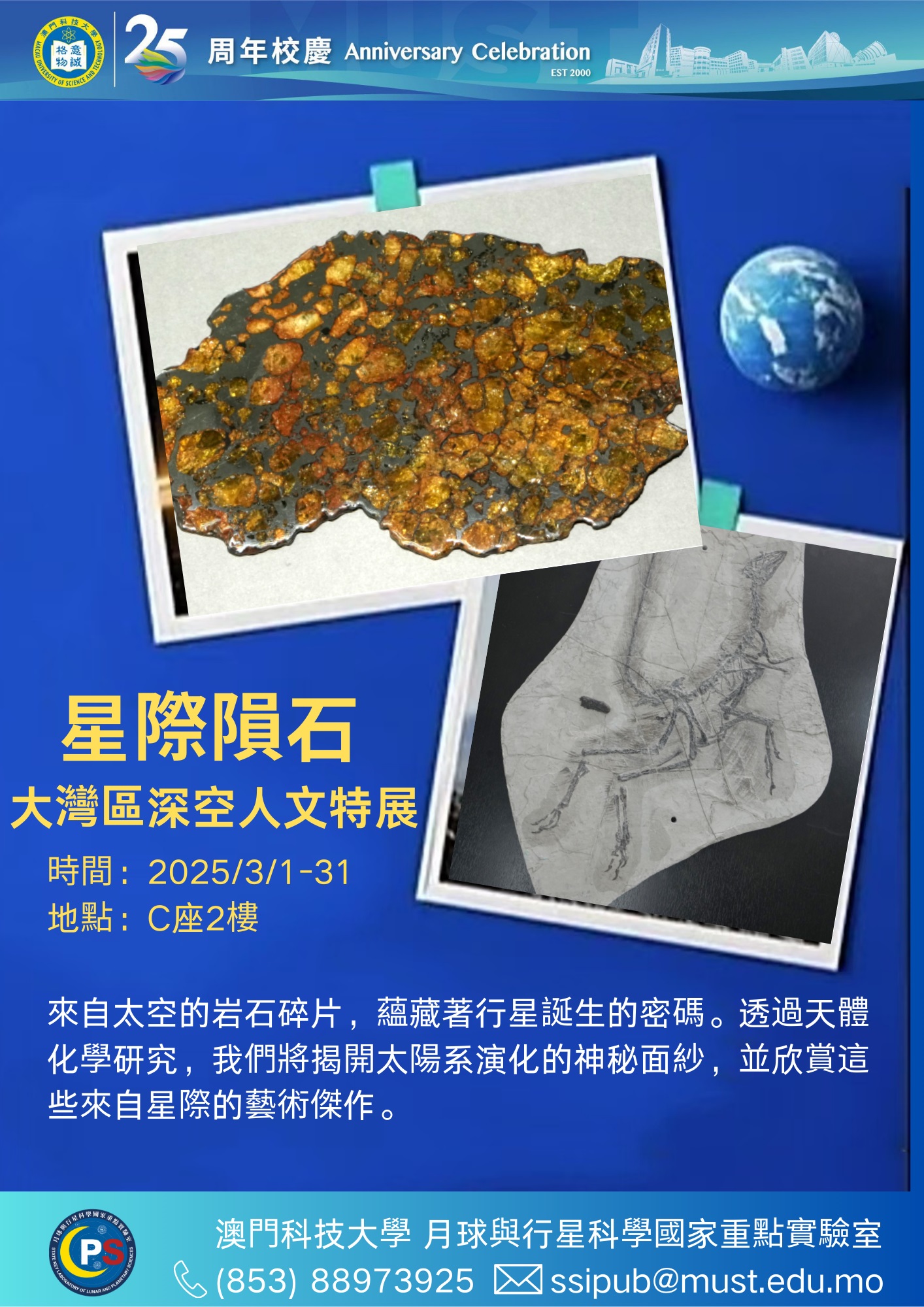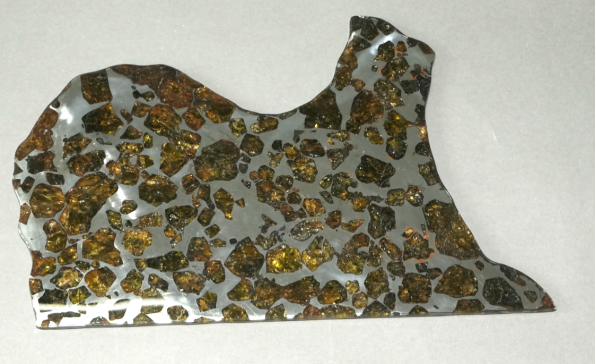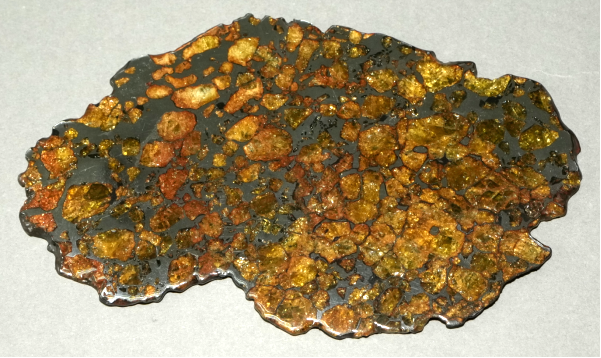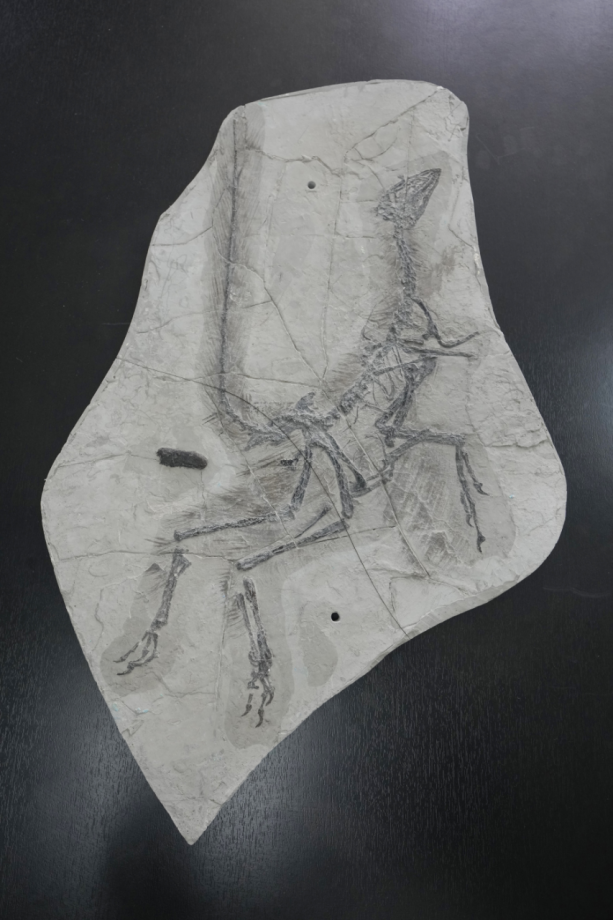Interstellar Meteorites: A Special Exhibition on Deep-Space Culture in the Greater Bay Area

The Lunar and Planetary Science State Key Laboratory has carefully prepared a large number of meteorite samples and some fossil specimens for this University Anniversary event, for the appreciation of visitors. Given that meteorites require specially designed display cabinets for preservation, some of the meteorites are exhibited on the 5th floor of Building A.
Meteorites are rock samples that are fragments of extraterrestrial bodies that have passed through the atmosphere and fallen to Earth. They are direct physical evidences for humans to understand the vastness of the sky! The Cosmochemistry Research Group in our laboratory explores extraterrestrial nebula processes and planetary processes through the study of meteorites. Additionally, meteorites have high collection value and aesthetic appeal.
This exhibition features a wide variety of meteorites, including chondrites, primitive achondrites, differentiated achondrites, stony-iron meteorites, and iron meteorites. Among them, the pallasites, a type of stony-iron meteorite, are particularly aesthetically pleasing, with olivine and other transparent silicate minerals clearly embedded in the iron-nickel metal, resembling a pomegranate cross-section, intricately patterned and exquisitely beautiful. Notably, the laboratory has introduced extremely rare slices of the Fukang pallasite and the stunning "Queen of Pallasites," the Imilac pallasite. These meteorites are quite rare!

Fukang pallasite slice

Imilac pallasite slice
To enhance the aesthetic value of meteorites, collectors not only display them as raw stones or slices but also further process them into handcrafted art pieces. This exhibition also features two swords made from iron meteorites: the Sword of King Goujian of Yue and the "Sewing Needle."

Sword of King Goujian of Yue made from iron meteorite
At the same time, this exhibition specifically introduces the asteroid impact event that occurred 66 million years ago, which led to a mass extinction of life. It displays some fossils of dinosaurs and their close relatives, as well as core samples from the impact crater in the Mexico bay.

Fossil of the Anchiornis

